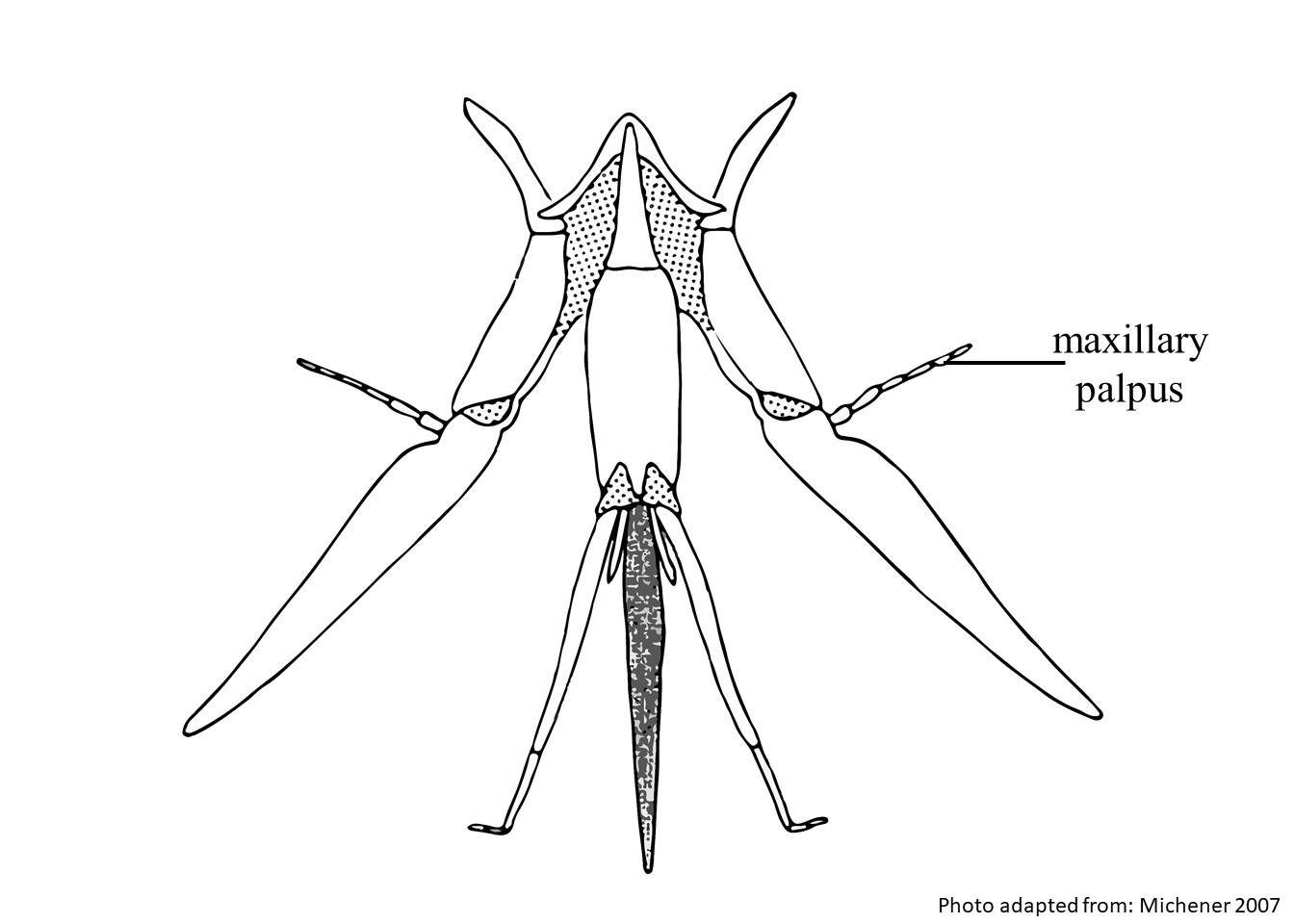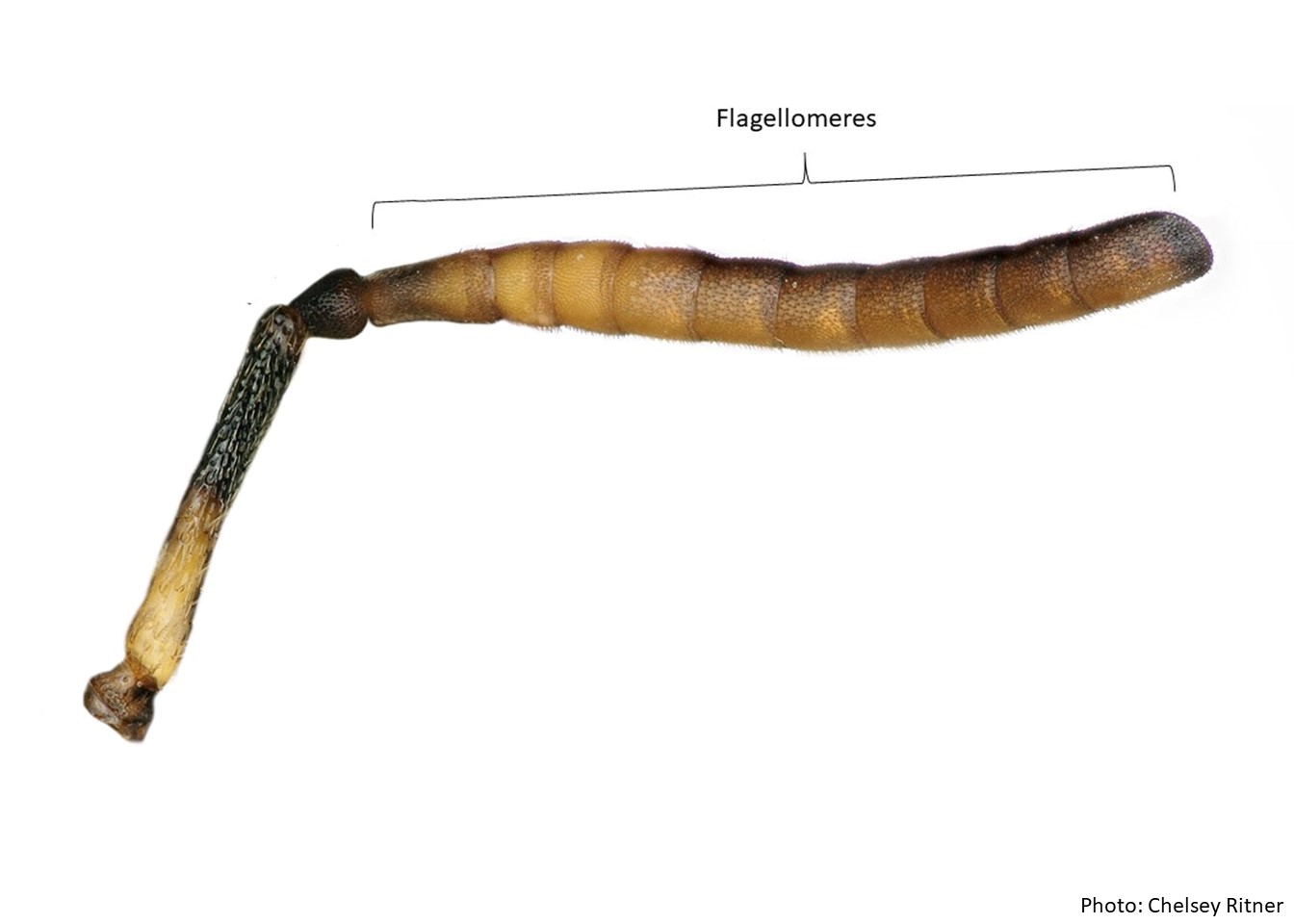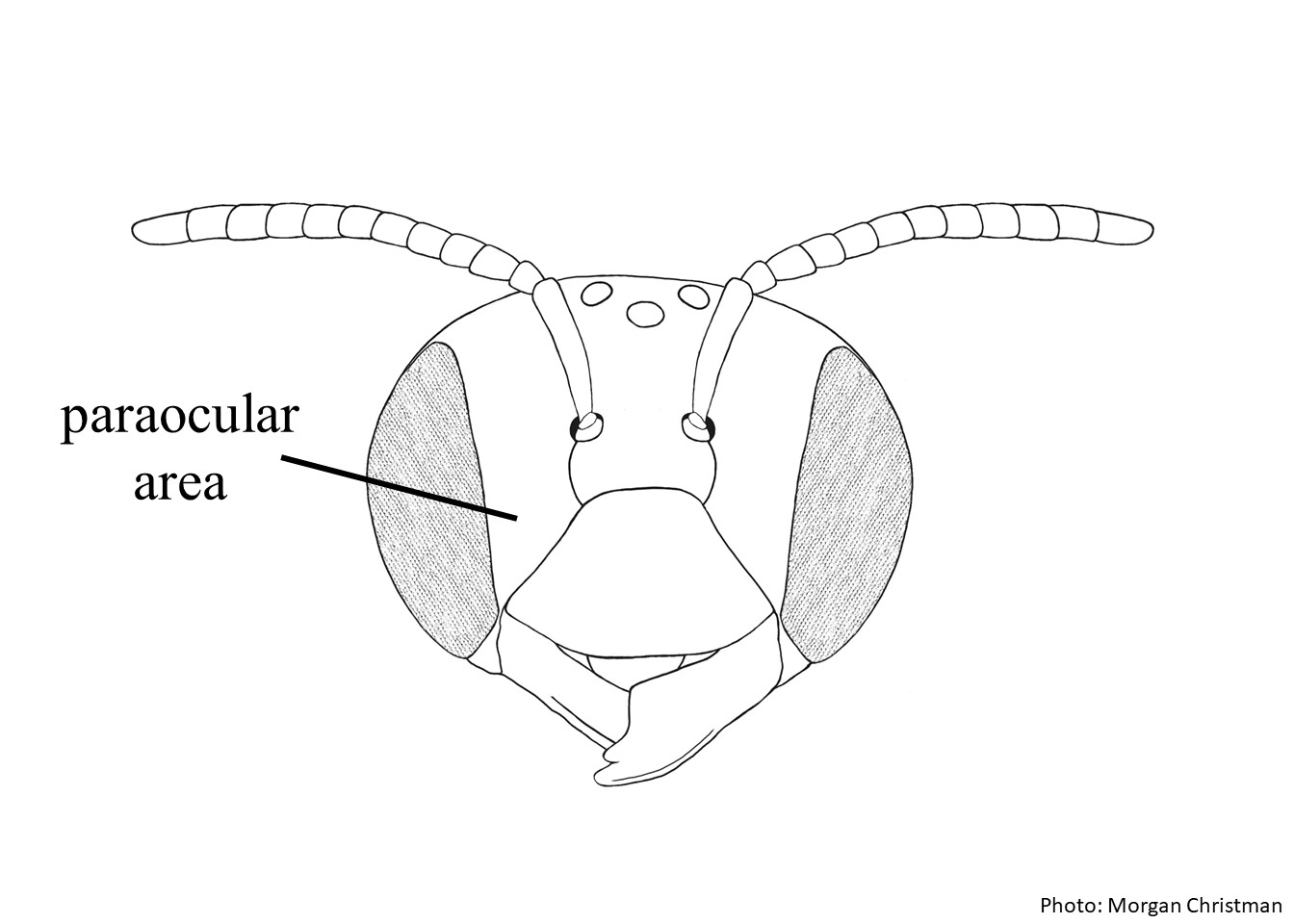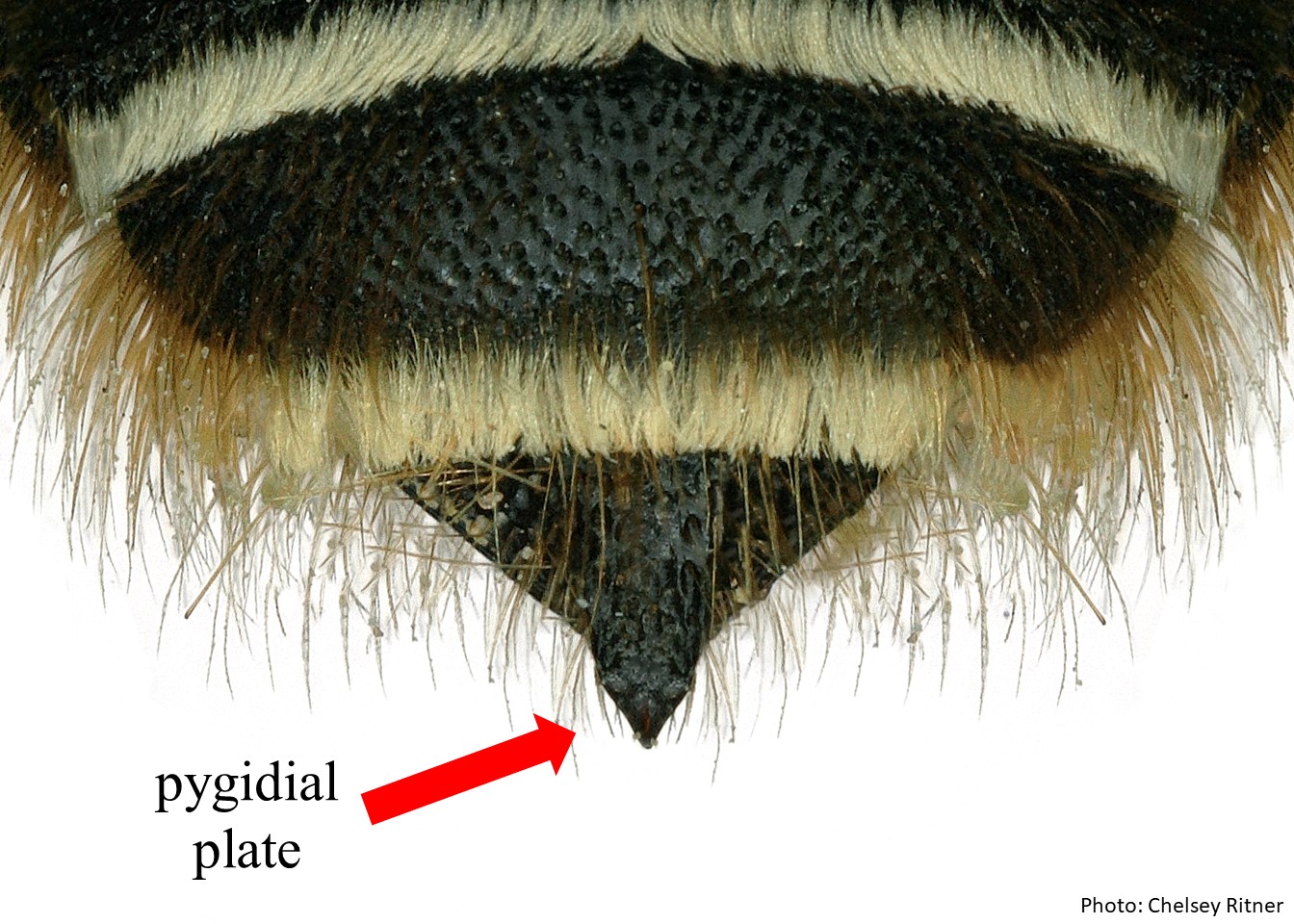Xylocopa (Lestis) are small bees, 10 – 15 mm in length, with shiny, metallic integumentintegument:
a tough, protective outer layer
. They have primarily pale pubescencepubescence:
short, fine hair
that is thicker in the males than the females. Their wings are brown with violet to blue iridescence (Hurd and Moure 1963Hurd and Moure 1963:
Hurd, P.D. and J.S. Moure. 1963. A Classification of the Large Carpenter Bees (Xylocopine) (Hymenoptera: Apoidea). University of California Publications in Entomology (Vol. 29). Berkeley and Los Angeles: University of California Press, 365 pp.).
Xylocopa (Lestis) contains 2 species: Xylocopa aerate and Xylocopa bombylans (Hurd and Moure 1963Hurd and Moure 1963:
Hurd, P.D. and J.S. Moure. 1963. A Classification of the Large Carpenter Bees (Xylocopine) (Hymenoptera: Apoidea). University of California Publications in Entomology (Vol. 29). Berkeley and Los Angeles: University of California Press, 365 pp.).
Xylocopa (Lestis) can be found through eastern Australia (Michener 2007Michener 2007:
Michener, C.D. 2007. The Bees of the World (2nd ed.). Johns Hopkins University Press, Baltimore and London, 953 pp.).
<a data-cke-saved-href="https://www.discoverlife.org/mp/20m?w=1200&kind=Xylocopa+aerata,Xylocopa+bombylans" href="https://www.discoverlife.org/mp/20m?w=1200&kind=Xylocopa+aerata,Xylocopa+bombylans" _blank"="">
Distribution map generated by Discover Life -- click on map for details, credits, and terms of use.
Xylocopa (Lestis) is a generalist pollinator and is known to visit a variety of flowers (Walker 2009Walker 2009:
Walker, K. 2022. Green carpenter bee ( Xylocopa ( Lestis )) https://www.padil.gov.au/search/?q=Lestis . Accessed Nov/1/2022.). This subgenus has been utilized as a substitute pollinator of tomatoes in Australia (Hogendoorn et al. 2000Hogendoorn et al. 2000:
Hogendoorn, K., Z. Steen, and M. P. Schwarz. 2000. Native Australian carpenter bees as a potential alternative to introducing bumble bees for tomato pollination in greenhouses. Journal of Apicultural Research 39: 67-74.).
(modified from Hurd and Moure 1963Hurd and Moure 1963:
Hurd, P.D. and J.S. Moure. 1963. A Classification of the Large Carpenter Bees (Xylocopine) (Hymenoptera: Apoidea). University of California Publications in Entomology (Vol. 29). Berkeley and Los Angeles: University of California Press, 365 pp.)
 four-segmented.
four-segmented. crenulatecrenulate:
crenulatecrenulate: with a strong protuberanceprotuberance:
with a strong protuberanceprotuberance: without subapicalsubapical:
without subapicalsubapical:Xylocopa (Lestis) has some unique features that, especially when coupled with its range, make it difficult to confuse with other Xylocopa subgenera. They can be easily distinguished by the crenulatecrenulate:
having a finely scalloped or notched outline or edge
flagella in the males and the strong protuberanceprotuberance:
rising or produced above the surface or the general level of a feature
in the lower paraocular areaparaocular area:
the area extending along the sides of the face parallel to the eye
 of the females. In both sexes the nearly parallel first and second submarginal cross veins and four-segmented maxillary palpusmaxillary palpus:
of the females. In both sexes the nearly parallel first and second submarginal cross veins and four-segmented maxillary palpusmaxillary palpus:
one of the pair of jointed, sensory structures carried on the maxilla of the mouth parts
 are also characters that can be used to separate this subgenus (Hurd and Moure 1963Hurd and Moure 1963:
are also characters that can be used to separate this subgenus (Hurd and Moure 1963Hurd and Moure 1963:
Hurd, P.D. and J.S. Moure. 1963. A Classification of the Large Carpenter Bees (Xylocopine) (Hymenoptera: Apoidea). University of California Publications in Entomology (Vol. 29). Berkeley and Los Angeles: University of California Press, 365 pp.).
Xylocopa (Lestis) is known to nest in the stems of a number of plant families including: Asphodelaceae, Casuarinaceae, Melaleuceae, Melastomataceae, Myrtaceae, and Proteaceae. They are known to construct both branched and unbranched nests and multiple females are known to use the same nest (Steen and Schwarz 2001Steen and Schwarz 2001:
Steen, Z. and M. P. Schwarz. 2001. Nesting and life cycle of the Australian green carpenter bees Xylocopa ( Lestis ) aeratus Smith and Xylocopa ( Lestis ) bombylans (Fabricius) (Hymenoptera: Apidae: Xylocopinae). Australian Journal of Entomology 39(4): 291-300.).
There are no known invasives.
Hogendoorn, K., Z. Steen, and M. P. Schwarz. 2000. Native Australian carpenter bees as a potential alternative to introducing bumble bees for tomato pollination in greenhouses. Journal of Apicultural Research 39: 67-74.
Hurd, P.D. and J.S. Moure. 1963. A Classification of the Large Carpenter Bees (Xylocopine) (Hymenoptera: Apoidea). University of California Publications in Entomology (Vol. 29). Berkeley and Los Angeles: University of California Press, 365 pp.
Michener, C.D. 2007. The Bees of the World (2nd ed.). Johns Hopkins University Press, Baltimore and London, 953 pp.
Steen, Z. and M. P. Schwarz. 2001. Nesting and life cycle of the Australian green carpenter bees Xylocopa (Lestis) aeratus Smith and Xylocopa (Lestis) bombylans (Fabricius) (Hymenoptera: Apidae: Xylocopinae). Australian Journal of Entomology 39(4): 291-300.